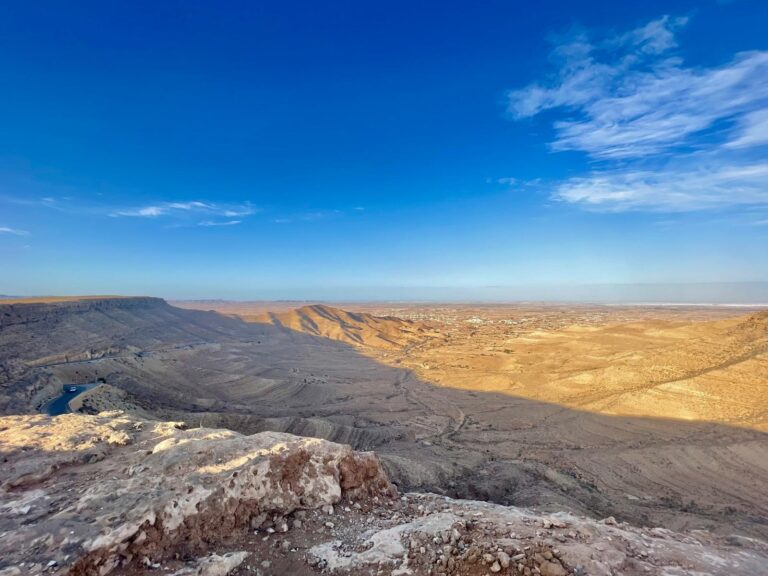MédEnine, Tunisia
Case Study site features
The study site is situated in the Jeffara area, located to the northeast of Médenine city in southeastern Tunisia. This region is characterized by a semi-arid climate, with elevations reaching up to 650 m above sea level. Its geographical features and climatic conditions make it a unique area for agricultural and ecological studies.
Land use in the Médenine is a combination of traditional practices and resource-dependent activities. The primary crops include cereals, olive groves and fig orchards. Livestock farming, mainly goats and sheep, is a key component of the local economy.
Climatic conditions in the Jeffara area pose significant challenges. The mean annual temperature is 20.3 °C, indicating a warm environment, while annual precipitation ranges between 100 and 200 mm, underscoring the scarcity of water resources. The evapotranspiration rate exceeds 1,500 mm annually, resulting in a considerable water deficit. These factors emphasize the need for efficient water management and innovative agricultural practices.

- Aridity index:
- Key drivers of LDD:
- Solutions:
- Type of implemented solutions:
- The participatory approach:
- Key stakeholders involved:
0.10 indicating Arid Climate
Aridity Index (AI) is a measure used to assess the dryness of a region by comparing the amount of precipitation (rainfall) to potential evapotranspiration (the water loss from soil and plants).
Aridity Index is calculated as the ratio of annual precipitation to potential evapotranspiration.
Lower values indicate drier conditions, with very low values representing arid or desert-like environments.
The aridity index is essential in climate studies, water management, and agriculture, as it helps classify climates and assess water availability.
For Médenine LDD drivers are predominantly drought and climate change, low water quality and soil erosion.
LDD drivers
Land degradation and desertification drivers are factors that lead to land deterioration and loss of productivity.
LDD drivers include natural causes, drought, and human activities, such as deforestation, overgrazing, and unsustainable farming. These drivers reduce soil fertility, increase erosion, and harm vegetation, making land more prone to degradation.
Water harvesting systems
Soil and water conservation technologies
Examples: Ground Water Recharge Wells, Jessour terraces for water harvesting in arid lands, Tabias soil structures to manage runoff, wire-mesh filled with rocks to slow water flow (Gabions Check Dams), Contours to reduce erosion and manage water.
All the evaluated solutions are co-designed to capture, store, and manage water in arid and semi-arid regions.
The primary aim is to reduce soil erosion, enhance water infiltration, and promote sustainable land use by maximizing the use of limited water resources.
High-Tech Solutions
High-tech solutions use advanced technologies, such as sensors and AI, to tackle environmental issues. In land management, they may include precision irrigation and remote sensing, offering high accuracy and real-time data for decision-making.
Co-Design (CoD)
Co-design involves stakeholders working together to plan and create solutions, ensuring that local needs, knowledge, and values shape the outcome. This fosters community ownership and relevance of the solution.
Co-Implementation (CoI)
Co-implementation is the shared execution of a plan by stakeholders, with each actively participating in putting the solution into action. This approach builds capacity and strengthens commitment to the project’s success.
Co-Assessment (CoA)
Co-assessment is the joint evaluation of project outcomes by stakeholders to measure effectiveness and identify improvements. It encourages adaptive management and maintains accountability and transparency.
Agricultural Development Group (GDA)
Farmers
Regional Agricultural Development Commission (CRDA)
Regional Environmental Directorate (RED)
National Water Supply and Distribution Company (SONEDE)
Tunisian Union of Agriculture and Fisheries (UTAP)









